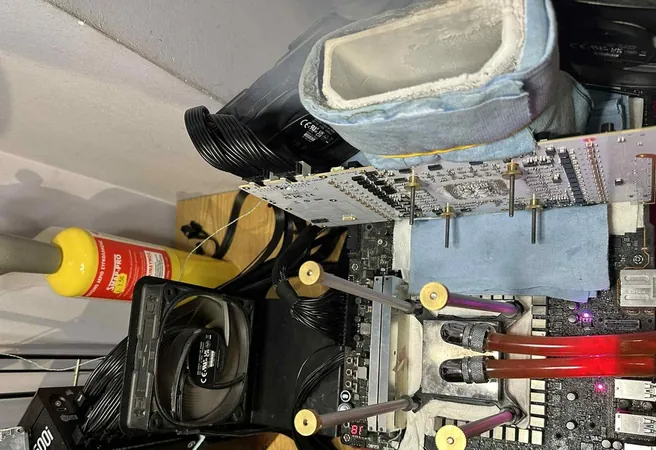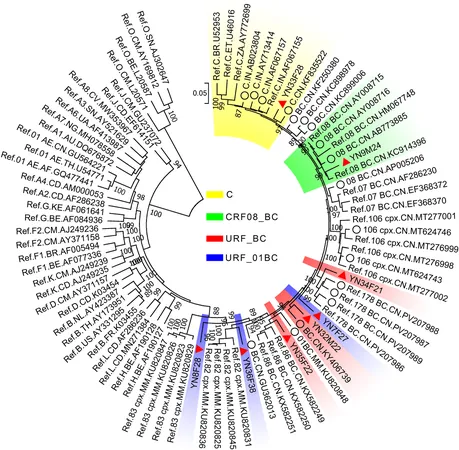
Revolutionary Blood Test Could Prevent Premature Births: How Cell-Free RNA is Changing the Game
2025-05-24
Author: Jia
A Major Breakthrough in Preterm Birth Prediction
Did you know that babies born before 37 weeks of gestation face a significantly higher risk of dying before they turn five? The daunting challenge of predicting preterm birth (PTB) has long been hindered by the complexity of the condition and the absence of reliable forecasting tools. But groundbreaking new research might shift the tides of this pressing issue.
The Power of Cell-Free RNA
At a recent conference of the European Society of Human Genetics, researchers unveiled a startling discovery: blood cell-free RNA (cfRNA) signatures can predict preterm birth more than four months before the delivery date! This research promises to reshape how we approach PTB prevention.
Meet the Minds Behind the Discovery
Dr. Wen-Jing Wang and her team, led by Professor Chemming Xu from Fudan University in Shanghai, meticulously analyzed blood plasma samples from 851 pregnancies, comprising 299 instances of PTB and 552 normal births. Their findings revealed significant differences in cfRNA markers between preterm and full-term births.
Understanding Preterm Birth Triggers
The study spanned various categories of preterm births, including those with and without ruptured membranes. Remarkably, less than 3% of these cases had a history of prior premature births. Dr. Wang emphasized, "The ability to detect these signals so early indicates a biological alert for PTB, well ahead of current clinical detection methods. This opens a significant window for prevention strategies."
The Global Impact of Preterm Birth
Every year, around 13.4 million newborns are delivered prematurely, translating to one in ten live births globally. Alarmingly, nearly one million of these infants do not survive their first year, making PTB the leading cause of childhood mortality. Preterm infants often grapple with serious health complications, ranging from respiratory issues to long-term concerns like cerebral palsy and blindness.
A Cost-Effective, Dual Testing Approach
What sets this research apart is its integration into existing protocols. "Our method aligns perfectly with routine Non-Invasive Prenatal Testing (NIPT), allowing for dual testing without additional blood draws," Dr. Wang explained. Moreover, advancements in RNA sequencing could lead to cost-effective solutions that make broad population screenings feasible.
Uncovering Unique Biomarkers
Unlike traditional genetic assessments, cfRNA offers unique, real-time insights into biological states. The team has already distinguished patterns linked to infection and inflammation in cases of membrane rupture, versus metabolic disruptions in cases with intact membranes, complementing clinical observations.
A Liquid Biopsy Revolution
Dr. Wang believes this innovative liquid biopsy technique could redefine our understanding and management of pregnancy complications. However, before it can be widely adopted, researchers stress the need for standardized protocols for RNA sample handling, given its instability compared to DNA.
Future Steps and Collaboration
To fully realize the potential of this diagnostic breakthrough, the research team aims to develop predictive algorithms through diverse population studies while exploring causes behind different subtypes of PTB. Collaborations with other institutions are essential to expedite the practical application of their transformative findings.
Experts Weigh In
Conference chair Professor Alexandre Reymond noted, "Advances in sequencing technology are unlocking a plethora of new diagnostic opportunities. This study exemplifies the shift towards using sequencing data to assess risk rather than merely mapping genetic predisposition."



 Brasil (PT)
Brasil (PT)
 Canada (EN)
Canada (EN)
 Chile (ES)
Chile (ES)
 Česko (CS)
Česko (CS)
 대한민국 (KO)
대한민국 (KO)
 España (ES)
España (ES)
 France (FR)
France (FR)
 Hong Kong (EN)
Hong Kong (EN)
 Italia (IT)
Italia (IT)
 日本 (JA)
日本 (JA)
 Magyarország (HU)
Magyarország (HU)
 Norge (NO)
Norge (NO)
 Polska (PL)
Polska (PL)
 Schweiz (DE)
Schweiz (DE)
 Singapore (EN)
Singapore (EN)
 Sverige (SV)
Sverige (SV)
 Suomi (FI)
Suomi (FI)
 Türkiye (TR)
Türkiye (TR)
 الإمارات العربية المتحدة (AR)
الإمارات العربية المتحدة (AR)